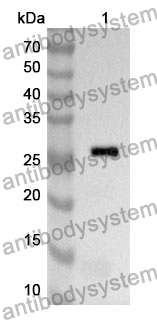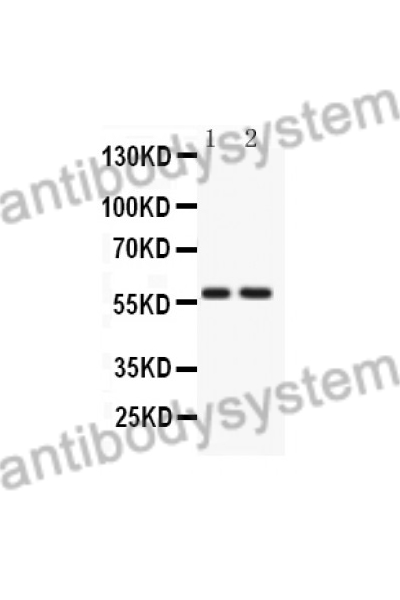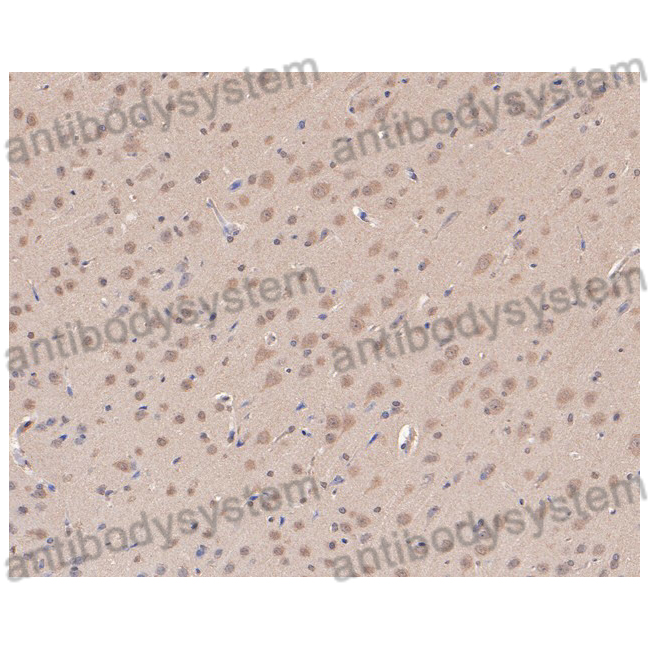Catalog No.
PHK40801
Species reactivity
Human
Host species
Rabbit
Isotype
IgG
Clonality
Polyclonal
Immunogen
E. coli - derived recombinant Human ATG14 (Glu209-Glu415).
Tested applications
ELISA: 1:4000-1:8000, IHC: 1:50-1:200, WB: 1:500-1:4000
Target
ATG14L, ATG14, Barkor, Atg14L, Beclin 1-associated autophagy-related key regulator, Autophagy-related protein 14-like protein, KIAA0831
Concentration
1 mg/ml
Purification
Purified by antigen affinity column.
Accession
Q6ZNE5
Applications
ELISA, IHC, WB
Form
Liquid
Storage buffer
Liquid in PBS containing 50% glycerol, 0.5% BSA and 0.02% sodium azide.
Stability and Storage
Use a manual defrost freezer and avoid repeated freeze thaw cycles. Store at 2 to 8°C for frequent use. Store at -20 to -80°C for twelve months from the date of receipt.
MEHP induced mitochondrial damage by promoting ROS production in CIK cells, leading to apoptosis, autophagy, cell cycle arrest., PMID:39586385
Raft-like lipid microdomains drive autophagy initiation via AMBRA1-ERLIN1 molecular association within MAMs., PMID:33034545
PDPK1 regulates autophagosome biogenesis by binding to PIK3C3., PMID:32876514
PKD2/polycystin-2 induces autophagy by forming a complex with BECN1., PMID:32543276
Binding of Avibirnavirus VP3 to the PIK3C3-PDPK1 complex inhibits autophagy by activating the AKT-MTOR pathway., PMID:31885313
Disrupted apolipoprotein L1-miR193a axis dedifferentiates podocytes through autophagy blockade in an APOL1 risk milieu., PMID:31116585
Atg14 protects the intestinal epithelium from TNF-triggered villus atrophy., PMID:30894050
Autophagy Is an Innate Mechanism Associated with Leprosy Polarization., PMID:28056107
ULK1-mediated phosphorylation of ATG14 promotes autophagy and is impaired in Huntington's disease models., PMID:27938392



